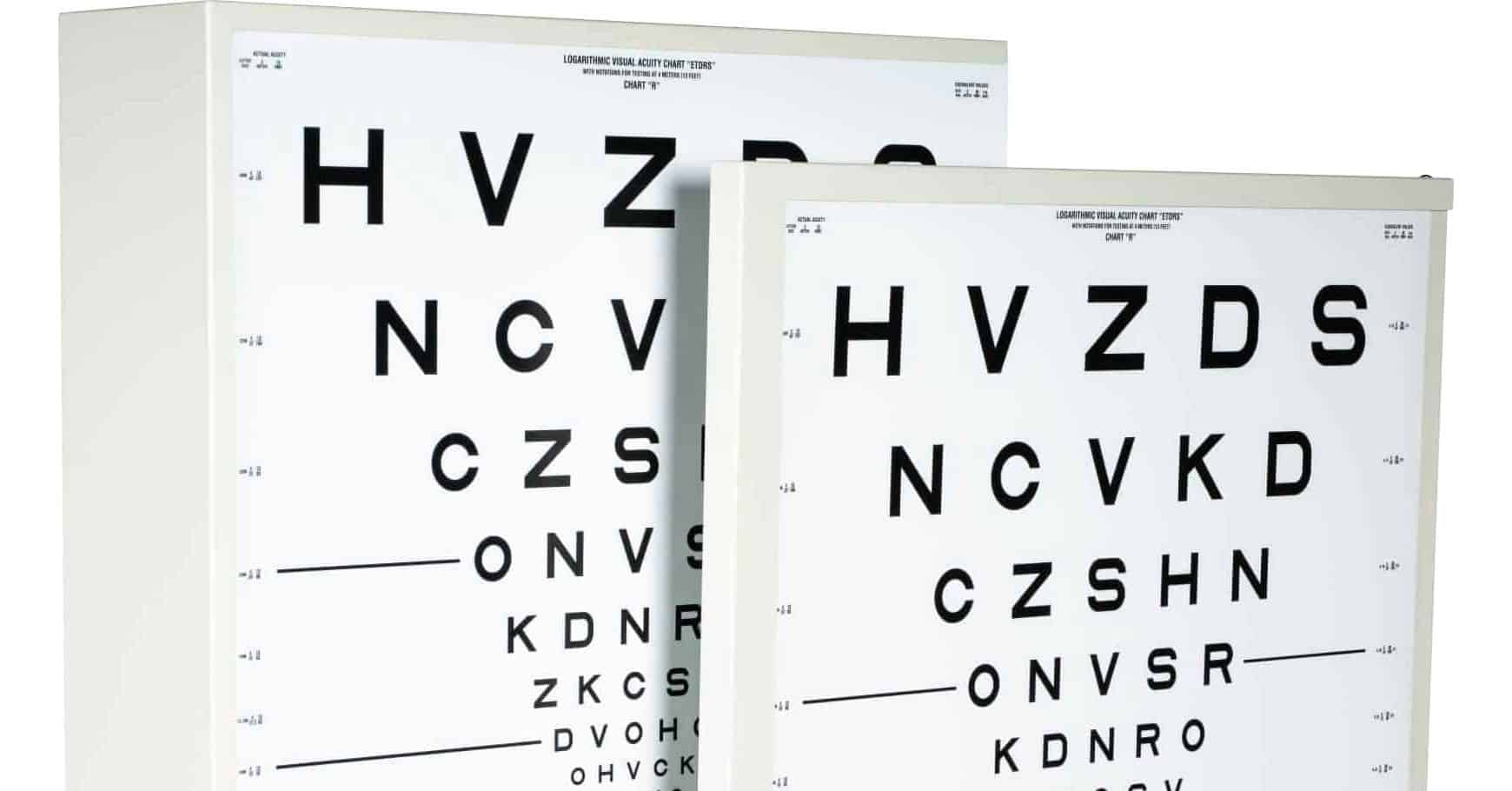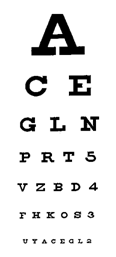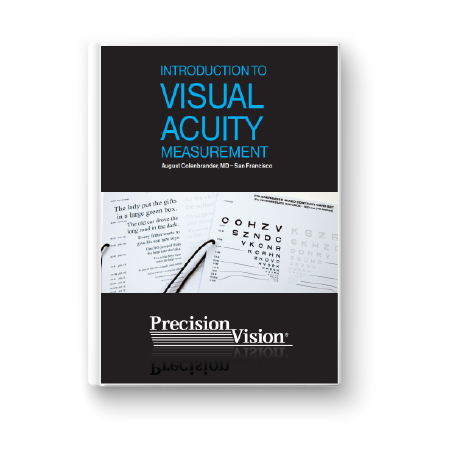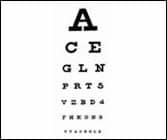
Snellen Eye Chart – a Description and Explanation
Snellen Eye Chart Snapshot
What Dr. Herman Snellen did for the field of vision testing is comparable to what the first automobile engineers did to revolutionize the car industry. These pioneers saw a need for change and additional resources at a time when people were yearning for better quality and higher standards of living in their day-to-day experiences.
The Snellen eye chart got its start in 1862 during the Second Industrial Revolution, nearly 150 years ago. At that time, ophthalmology was at the brink of a period that would later be called “The Golden Age of Ophthalmology”, during which ophthalmology would become the first organ-based specialty. Dr. Snellen, a Dutch ophthalmologist, developed the Snellen chart to measure a person’s visual performance against an objectively defined and repeatable reference standard. At this point, there were only reading tests that relied on whatever fonts were available at the local print shop, but no objective standards.
To provide a standard, Dr. Snellen designed stylized letters on a 5×5 grid, which he called “optotypes.” He defined the reference standard (known today as “20/20”) as the ability to recognize one of his optotypes when it subtends an angle of 5 minutes of arc. He described this as a size that can be “easily recognized by normal observers.”
The original Snellen chart had a rectangular shape with seven rows of letters printed progressively smaller as you move down the chart. Many variations of the Snellen chart exist today. Their commonalities include the rectangular shape, which dictates that varying numbers of optotypes occur on each line as the space allows. Different charts may have a different number of lines and may vary in the size progression.
Shown are Snellen’s original chart and a common U.S. variant on which large numbers on the side make it easy for malingerers to decide to which line they will chose to read. These Snellen charts feature optotypes with serifs.
On most Snellen charts the progression of letter sizes is irregular and may vary from 14 percent (20/70 to 20/80) to 100 percent (20/100 to 20/200 to 20/400). In 1868, just six years after Snellen first introduced his first Snellen eye chart, Dr. John Green of St. Louis, who had done a fellowship with Snellen, proposed to replace the non-uniform steps with a uniform geometric (logarithmic) progression of 25 percent for each line. Green also proposed the use of a non-serif font and proportional spacing. His sequence later became known as the “Preferred Numbers” series and is widely used in many standards. Unfortunately, Green’s proposals were far ahead of his time and forgotten; it would take a century until this sequence became generally accepted for visual acuity measurement.
1.0
1.25
1.6
2.0
2.5
3.0
4.0
5.0
6.3
8.0
10
Although Snellen vision charts are used across the globe for testing visual acuity, little changed in the next century. In 1959, Dr. Louise Sloan of Johns Hopkins University redesigned the letters on the Snellen chart. While Green’s letters without serifs had been rejected “because they look unfinished”, a century later letters with serifs were rejected “because they look old-fashioned.” Sloan also coined the term M unit to designate the size of optotypes. M units represent the denominator of a metric Snellen fraction. This notation simplifies Snellen’s verbose definition; instead of stating that a letter “subtends 5 minutes of arc at ‘x’ meters”, one can simply say that the letter is ‘x’ M units. Thus, a letter size of 1M will represent 20/20 when shown at 1 meter, a 2M letter will be 20/20 at 2 meters, 2.5M is 20/20 at 2.5 meters and so on. Most of the eye charts Precision Vision manufactures have M units printed on them.
In 1976 Bailey and Lovie, then in Melbourne, proposed a new layout, replacing the rectangular chart layout with a variable number of letters per line with a triangular one with five proportionally spaced letters on each line. In 1982, when the National Eye Institute needed standardized charts for its “Early Treatment of Diabetic Retinopathy Study” (ETDRS), it combined Green’s logarithmic progression with Sloan’s letters and the Bailey-Lovie layout to create what are now known as ETDRS charts.
This chart format has been accepted by the National Eye Institute and the FDA, and is mandated for many clinical trials performed worldwide. It is accepted worldwide as today’s Gold Standard for accurate visual acuity measurement.
The contribution Snellen made to vision testing was revolutionary. The term Snellen chart is universally accepted, but not universally understood. Many variants of the original Snellen vision chart are in use today. Precision Vision manufactures today’s Gold Standard, the “ETDRS” chart layout.
Please click here for more information about the modern versions of the Snellen vision chart, now referred to as “ETDRS” charts.
The traditional Snellen eye chart is still widely used and, in many cases, can be acceptable. However, any practitioner would serve the process better by using an updated, modernized Snellen chart. Precision Vision makes charts for many different test distances and several different optotypes, each one serving a specific task.
With the additional enhancements made by Dr. Green and Dr. Louise Sloan, present-day Snellen charts follow a logarithmic progression, have improved letter design, and have a uniform 25 percent increase from line to line. Unlike a traditional Snellen chart shown in the previous graphic, ETDRS charts use the same number of optotypes on each line. This organization of optotypes helps prevent mistaken gain and loss of lines while testing over lengths of time. Furthermore, ETDRS charts use equality from optotype to optotype and line to line, making the acuity chart balanced. Today’s improved Snellen eye charts follow most of these rules with the exception of sometimes using less than five letters on a line.
Continue to learn about Measuring Snellen Visual Acuity.
Related Terms: Snellen chart, Snellen eye chart, Snellen, Snellen eye test, Snellen visual acuity, Snellen acuity, Snellen vision chart, Snellen acuity, Snellen test









